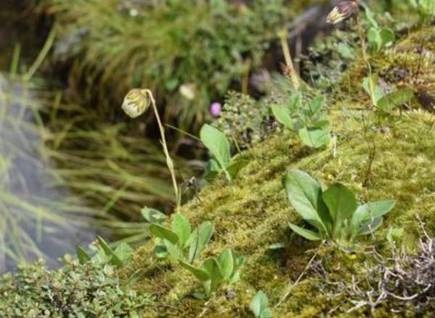Why in News?
A new species of alpine plant has been discovered in Arunachal Pradesh. It has been found in Tawang district named as Cremanthodium indicum.
Facts about Cremanthodium indicum:
- It's discovery has been published in Biodiversitas: Journal of Biological Diversity.
- It is a species of Himalayan Sunflower
- Something surprising is that the species newly found is critically endangered as per the IUCN guidelines
- The plant species generally flowers from July to August
- It is endemic to Penga-Teng Tso Lake of Tawang district and was discovered there
- Cremanthodium indica is a perennial herb and stands 16–24 cm tall.
- The flowering plant grows in boggy soil among mosses along the banks of alpine lake

What are Alpine Plants?
Alpine plants are those that grow at a high elevation and above the tree line.
These plant species generally grow in alpine tundra.
The species include perennial grasses, forbs, cushion plants, mosses and lichens.
The plants grow in harsh conditions, low temperatures, dryness and UV radiation, wind, drought, poor nutritional soil etc.
They also grow in a short growing season.
Alpine plants occur in a type of natural region or biome that does not contain trees. It transitions to subalpine forests below the tree line
Various stunted forests occurring at the forest-tundra ecotone are known as Krummholz
As the elevation increases, the vegetation ends at the snow line. It is also known as the Nival Zone.
About Tawang District:
Tawang is the smallest district out of the 16 districts in Arunachal Pradesh with a population of only almost 50,000 people. This place is mainly inhabited by Monpa tribes.
What is IUCN and Red List of threatened Species:
International Union for the Conservation of Nature, IUCN is a membership Union composed of both government and civil society organisations. It harnesses the experience, resources and reach of its more than 1,400 Member organisations and the input of more than 17,000 experts.
IUCN follows the following strategy to categorize the plant and animal species:
Assess- Plan- Act- Communicate
The main aim of IUCN is to influence, encourage and assist societies to conserve the integrity and diversity of nature and ensure that any use of natural resources is equitable and ecologically sustainable.
The IUCN Red List of threatened Species is also known as IUCN Red Data List and was founded in 1964. It is the world's most comprehensive inventory informing about the global conservation status of various species. There are 7 categories in the IUCN list namely Data Deficient (DD),Least Concern (LC), Near Threatened (NT), Vulnerable (VU), Endangered (EN), Critically Endangered (CR), Extinct In The Wild (EW), Extinct (EX)
Comments
All Comments (0)
Join the conversation